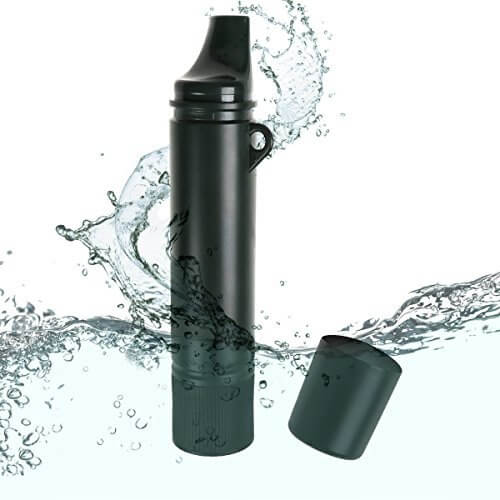Some of the water purification devices on the market are not really purifiers, at all. If you aren’t careful about which water purification device you choose, you could waste a lot of money and end up with little or no protection. Here’s how to tell the difference.
 1. High Priced does not always mean high quality.
1. High Priced does not always mean high quality.
Most of us are used to paying more to get more, but when it comes to a water purification device; price has nothing to do with quality. The most expensive systems on the market include a reverse osmosis (RO) step.
Now, I’m talking only about systems that are designed for use by homeowners with a public provider. If you have a private well or other private source, you need laboratory testing to determine contaminants and then you can design an effective system.
If reverse osmosis is your only choice to remove specific contaminants, then you will also need to include other steps. Some companies’ advertisements make it seem that RO is all that you need, when nothing could be further from the truth.
People who are serviced by a public provider do not need an RO step in their water purification devices. There are less expensive, more effective options.
2. Low Priced might not do the job
On the other end of the spectrum are cheap products like the Brita water purification device. While the system does remove chlorine and some other common contaminants, it does not remove chlorine byproducts, commonly referred to as THMs.
THMs or trihalomethanes are known carcinogens. For many years, we were told that the amount released during the chlorination process was safe for consumption. The first studies that showed an increased cancer risk from this level of consumption were withheld from the public.
Now, we know that one of the reasons we need water purification devices in our homes is because of THMs and the increased cancer risk that accompanies them. If a water purification device does not include a multi-media adsorptive block, don’t buy it. No matter how cheap it is, it is still a waste of money.
3. The Best Water Purification Devices.
The best systems include several steps to remove the widest range of contaminants. First, granular carbon to reduce chlorine and other chemical contaminants, then a multi-media block to further reduce chemicals and get rid of the ones that are not trapped by carbon, alone.
The block should have a sub-micron sized porous structure to prevent water from circling around the granules, which would result in less effective contaminants removal. The structure also removes illness causing parasitic cysts that can be deadly.
The best water purification device also includes an ion exchange step to remove lead and other metallic ions. Heavy metals are exchanged for potassium and sodium, to both improve the taste and the healthfulness of your water.
These are not the most of the least expensive systems. The price is around a hundred dollars for a kitchen counter top purifier. People who install water purification devices like these save thousands of dollars per year by not buying bottled. It’s the safest and most economical choice for your family.


 1. High Priced does not always mean high quality.
1. High Priced does not always mean high quality.
